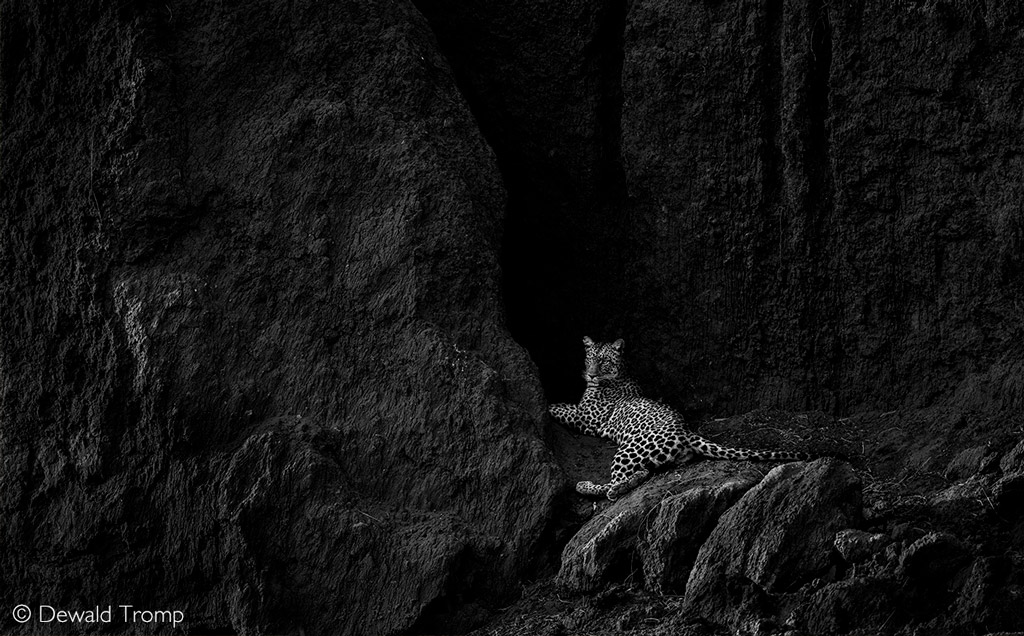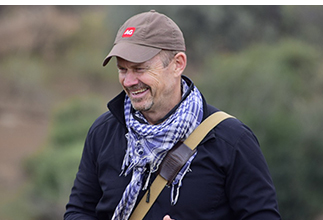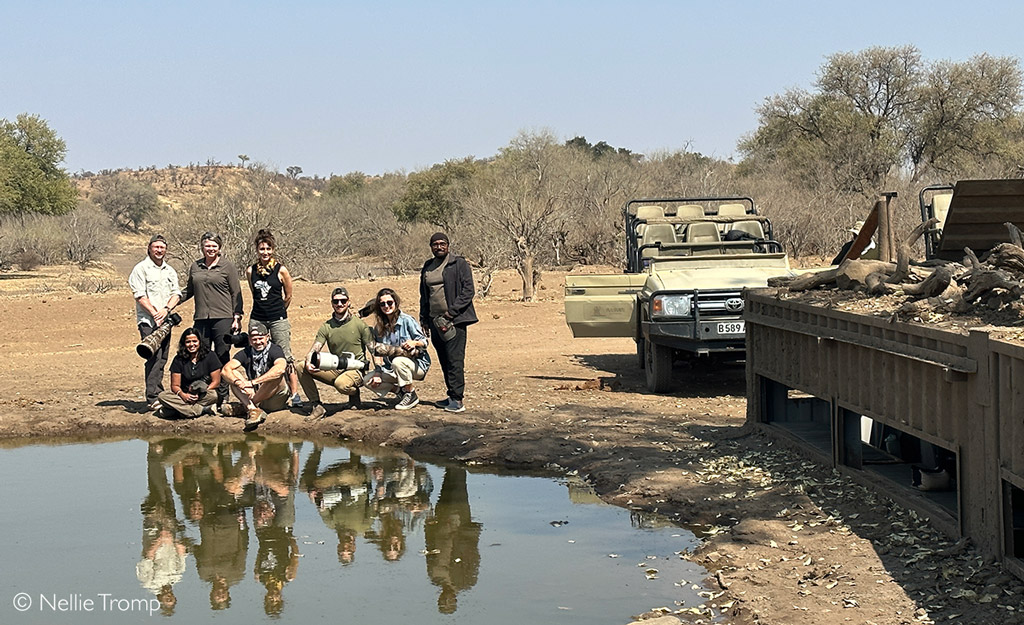
This is a copy of our weekly email newsletter. Subscribe here to receive the newsletter.
Rhino crisis averted + KAZA elephants + South Luangwa safari

Just back from six days in Botswana’s Tuli Block with our 2023 Photographer of the Year winners. To say that we were blown away by the wildlife sightings and photographic opportunities is putting it mildly. Six different leopards in the first three days, lions everywhere and a relaxed cheetah mom with three cubs made for riveting days in this arid paradise. And a morning in a sunken photo hide that was so busy with comings and goings and epic photographic moments, we returned to the lodge elated and exhausted. Expect a gallery of outstanding photos in the months to come. Our featured image above is a brief hors d’oeuvre…
And what a wonderful group to spend time with! The fascinating discussions and hilarious banter set the tone and added layers of enjoyment to what was already an epic safari. Thanks to my teamAG travel experts for excellent planning and management of our safari and to Mashatu Botswana for hosting us at their superb lodges – and for the slick, effortless service and delicious food that catered for our diverse dietary requirements. Good times!
Keep the passion

Simon Espley – CEO, Africa Geographic
From our Editor – Taryn van Jaarsveld

What do African penguins and the James Webb Space Telescope have in common?
African penguins may have feathers and wings, but they cannot fly. The James Webb Telescope has neither, yet it is flying through space at about 1,200km/h. Their inability to fly puts penguins at a distinct disadvantage to their flying seabird relatives, as they are unable to find food on the wing. Thank goodness then, that penguins have a strong sense of smell – which helps them detect prey at sea at up to 2km away. A study conducted off the coast of South Africa found that penguins find their prey by smelling the compound dimethyl sulphide, emitted by phytoplankton in prey patches.
It turns out that the James Webb Telescope, too, can detect the same compound – produced only by life – by analysing the chemical signature of molecules in light. Now, for the first time, the telescope has detected dimethyl sulphide out there – on a planet 120 light years from Earth. This is the most promising possibility of alien life found to date. The telescope has also detected carbon dioxide and methane on the planet – possible signs of a water ocean underneath a hydrogen-rich atmosphere. Could the planet be harbouring phytoplankton, or feathered creatures, like planet Earth? Only time will tell.
You may also be fascinated by our tale of a flower sexually deceiving a beetle into becoming its pollinator in our second story below. Or take some time out to dream of your travels through Africa, as we focus on Nyerere National Park, a rugged wilderness area in Tanzania. See our first story.
Happy celebrating Africa to you!

Story 1
https://africageographic.com/stories/nyerere-national-park-selous-rebranded/
NYERERE NP
Nyerere NP, formerly part of Tanzania’s Selous Game Reserve, is one of Africa’s most rugged wilderness areas
Story 2
https://africageographic.com/stories/the-boudoir-of-beetles/
BEETLE BOUDOIR
How this longhorn beetle is deceived into copulating with a rare orchid, Disa forficaria, in order to act as its pollinator
 TRAVEL DESK UPDATES:
TRAVEL DESK UPDATES:
Gorilla trekking in dense forests or a river-side Greater Kruger adventure? Take your pick and get in touch with us to plan your ultimate African safari:
Congo forest – including lowland gorillas – 9 days/8 nights – from $13,835pps
Experience Odzala-Kokoua National Park in Congo-Brazzaville, one of Africa’s oldest parks and the ideal destination for your bucket-list gorilla-trekking safari. Luxurious camps, pristine rainforests, peaceful river activities and habituated western lowland gorillas await. This is a safari like no other. Join us on this ultimate 9-day safari and trek for gorillas, forest elephants, bongos, dwarf crocodiles, huge flocks of grey parrots and green pigeons – and much more.
Special Offer! Book 4 nights at the new Tanda Tula Safari Camp & receive 1 night FREE!
We introduce you to the new Tanda Tula Safari Camp – with an irresistible special offer! The camp has been redesigned, taking full advantage of its location along the Nhlaralumi River in South Africa’s Timbavati Private Nature Reserve, Greater Kruger. It’s a place of endless space, privacy, and a true paradise! Book 4 or more nights at Tanda Tula’s new home and get 1 night free! Valid 01 October-15 December 2023 & 09 January-31 March 2024

Epic Tuli photo safari
Our 2023 Photographer of the Year winners are pictured here after a superb session in the Photo Mashatu underground hide. They enjoyed an epic Tuli Block (Botswana) safari, courtesy of our travel experts. Ask us to plan your next safari.

 WATCH: Several of our safari experts view October as the best month for a safari in Africa. Click here to see why (2:00). With predators easy to spot at waterholes in southern Africa, fewer crowds at Mara River wildebeest crossings and warm weather at the beach, there are plenty of reasons to start planning an October safari now. Let us help you plan your next safari!
WATCH: Several of our safari experts view October as the best month for a safari in Africa. Click here to see why (2:00). With predators easy to spot at waterholes in southern Africa, fewer crowds at Mara River wildebeest crossings and warm weather at the beach, there are plenty of reasons to start planning an October safari now. Let us help you plan your next safari!
To comment on this story: Login (or sign up) to our app here - it's a troll-free safe place 🙂.![]()






